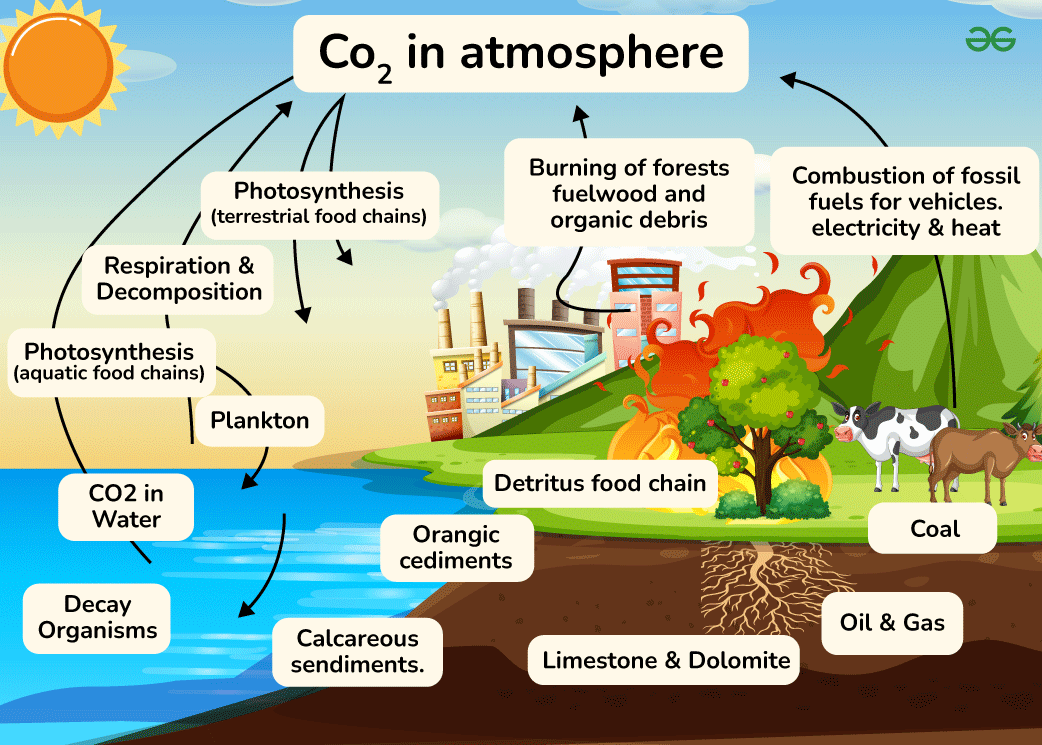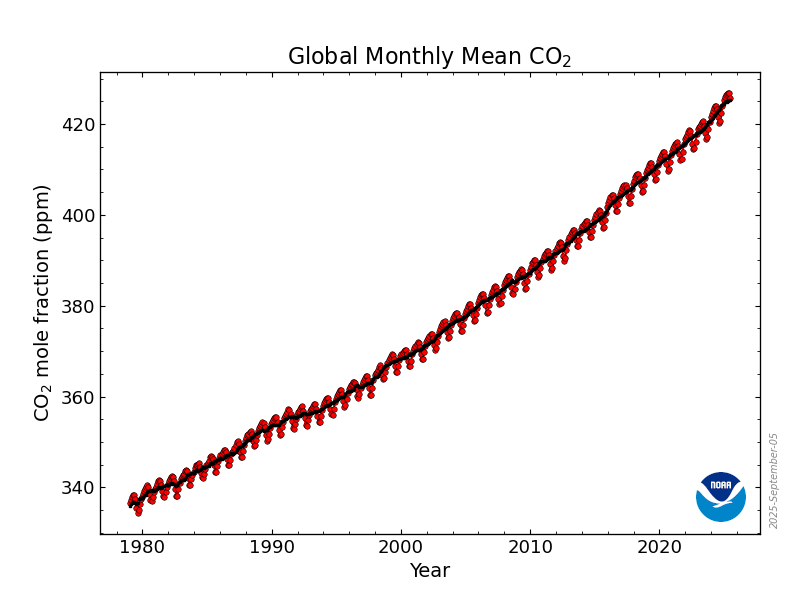The carbon cycle is a system in which 3 things are accomplished
Some of the main processes include:
The four Earth's Spheres include
Carbon moves between the spheres in a few ways, like respiration, in which people and animals breathe in the air from the atmosphere, absorb the oxygen, and release carbon dioxide, putting the carbon from the biosphere into the atmosphere. Another way is through photosynthesis, in which plants use the sun's energy, through radiation, and absorb the carbon dioxide from the air, transforming it into oxygen. This is an example of the carbon transferring from the atmosphere into the biosphere. Another example is through volcanoes, in which they erupt, and expel carbon into the atmosphere. This is an example of carbon travelling from the lithosphere into the atmosphere.
 (Geeks, 2025)
(Geeks, 2025)
Human activities have been a significant impact on the carbon emissions on Earth, such as:
These are some ways that humans have raised carbon emmisssions on our planet, like burning fossil fuels or extracting oil from the earth, drilling through rocks and substances that are CO2. It has increased by about 50% since 2000, with the parts of the air going up from 365 parts per million, all the way up to 420 parts.
 (Lan, 2025)
(Lan, 2025)
Imagine, that in 50 years in the future, hallf of the air is carbon dioxide. We wouldn't be able to breathe without technological assistance, and even if you were, there would be air purifiers in our air. This is what some people want you to think. Realistically, if you look at the CO2 emmissions, they fluctuate. And although it hasn't been as much as they have been, it might just be another event like the ice age. (Even though I don't believe that this is happening, we might need to change a little bit because it's a little over 100 more parts per million than what it has ever been.)
 (Skeptical Science, n.d.)
(Skeptical Science, n.d.)
In conclusion, we learnt that carbon has many ways of travelling through the spheres, like the atmosphere, lithosphere, hydrosphere, and bioshpere. We also learnt that there is a few different ways that Carbon moves, like humans breathing out Carbon Dioxide, or CO2, and plants absorbing CO2, and by the process of photosynthesis, and making Glucose, or C6H12O6. We learnt that human activities have had a significant impact on the CO2 levels in the atmosphere, like people using fossil fuels and burning it to make energy, and releasing CO2 into the atmosphere. We also learnt about global warming, and that the CO2 levels in our atmosphere fluctuates, although not as much ass it is now.
Lan, X., Tans, P. and K.W. Thoning: Trends in globally-averaged CO2 determined from NOAA Global Monitoring Laboratory measurements. Version Friday, 05-Sep-2025 12:12:59 MDT
https://doi.org/10.15138/9N0H-ZH07Geeks, G. f. (2025, July 23). Geeks for Geeks. Retrieved from Diagram of Carbon Cycle:
https://www.geeksforgeeks.org/biology/carbon-cycle-diagramDrs Timothy Bralower, D. B. (n.d.). PennState. Retrieved from Carbon Dioxide Through Time:
https://www.e-education.psu.edu/earth103/node/1018Skeptical Science. (n.d.). Skeptical Science. Retrieved from CO2 History:
https://skepticalscience.com/graphics.php?g=10